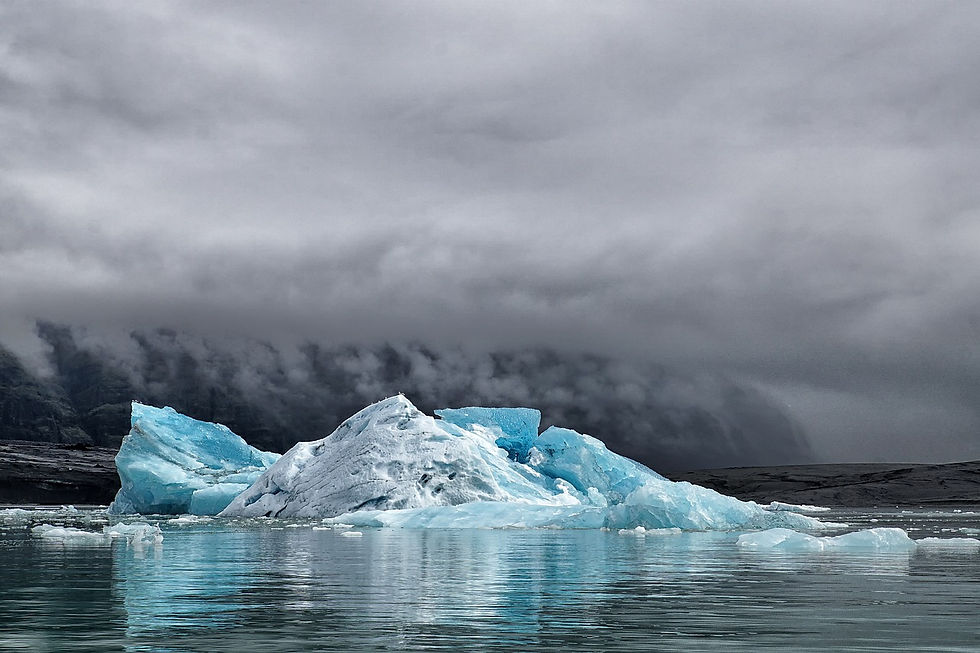How Tourism Combats Climate Change?
- mvbchairman
- Jun 7, 2024
- 4 min read
Updated: Aug 6, 2024

Whether it's a ski holiday in the snow-capped Alps, a winter sun excursion on a white sandy beach in the Caribbean, or even a whale watching experience off the coast of Iceland, the tourism industry is closely linked to the climate.
As a concept, tourism relies heavily on the wonders of nature and the various ecosystems that people around the world want to visit, but as climate change makes nature a top priority, the tourism industry must also accept that nature is part of that and find ways to combat climate change.
According to the data from Nature Climate Change, tourism's global carbon footprint accounts for 8% of global greenhouse gas emissions, and nearly half of those emissions come from aviation. And it is these carbon emissions that harm glaciers, coastal areas and local communities, these are the things that drive tourism.
However, the answer is not simply to 'stop tourism', a possibility we also experienced during the coronavirus pandemic of 2020. Tourism accounts for approximately 10.8% of global GDP and is essential to millions of livelihoods around the world.
However, if climate change continues at the same rate, it is likely that there will be no tourism industry in the next few decades. So, it's clear that while tourism will continue, it needs to find ways to combat climate change to not only protect the industry, but also the natural places we value so much, and the communities that will be hit hardest by climate change. an ever-changing world.
In this article, we will outline how tourism contributes to climate change, before explaining the importance of the industry in fighting climate change, along with specific examples where the travel community is already taking action.

How Tourism can reduce its Carbon Footprint
It is clear then that the tourism industry needs to make fundamental changes, first to reduce its carbon footprint, then to empower and benefit local communities around the world.
In the next section of the article, we will outline specifically how the tourism industry can take steps to reduce its carbon footprint.
Measurement
It's impossible to know how to decarbonize without first knowing how much carbon to release. Once you understand your company's emissions, you can identify places where you can reduce your greenhouse gas output.
Most travel businesses already do this, as there are a number of free tools that companies can use to measure their carbon footprint.

Accommodation and food:
We've discussed how problematic certain types of accommodation are when it comes to climate change and tourism, and in fact a fifth of the tourism industry's carbon footprint comes from the accommodation people need when they travel.
To achieve the target set by the Sustainable Hospitality Alliance of reducing carbon emissions by 90% by 2050, consumers and the hospitality industry need to work together.
How else can tourism fight climate change?
We've discussed how the tourism industry can reduce its carbon footprint and have briefly discussed how certain types of tourism can incentivize groups to undertake conservation efforts in their areas.
But how can tourism overcome the issue of climate change? How else can the industry act to ensure that it not only reduces its impact on the planet, but also has a positive impact?
Small scale support
One way tourism can begin to reverse the impacts of climate change is by supporting small but important changes in the way tourism and accommodation options are run.
For example, in Peru, the use of donkeys to carry luggage over the mountains has had a negative impact on the local environment. As non-native animals, they have eroded most of the mountainsides and outcompeted many native species living in the Andes.
Some tour operators are now returning to the traditional use of llamas and alpacas to help tourists through the mountains, as their impact on the region is not the same. Here in Indonesia, we can promote back the use of horse carriage, rick-shaw or bicycle.

Consumer education
Travel should be an opportunity for people to see and explore the world, but in this modern climate, travel also needs to be educational for tourists.
By taking people to parts of the world they never expected, and exposing the dangers these beautiful places pose, the tourism industry can open people's eyes to what they may one day lose.
Tourists themselves need to be aware of the possible impacts of their choices. We all need to know where our money is going, whether it is going to indigenous communities or going into the bank accounts of large multinational corporations. How our accommodation choices will impact the communities you visit and the local environment. Whether by taking a particular tour, we are exploiting or helping the people who welcome us into their homes.
Overall, tourists need to be close to the destinations they visit. The barriers between tourists and locals need to be removed, we need to end all-inclusive resorts where tourists do not see the damage or exploitation they are doing to native communities.

Protecting wild spaces
As we have mentioned several times, a region's climate is often the main factor driving tourism to a destination. With many climates, environments and ecosystems threatened by climate change, the tourism industry can lead efforts to protect wild areas that function as carbon sinks, and thereby take the fight to climate change.
Establishing national parks to prevent the spread of agricultural and logging industries is a truly effective way to combat climate change, and the tourism industry needs to help local communities in whatever way they can to build sanctuaries.





Comments